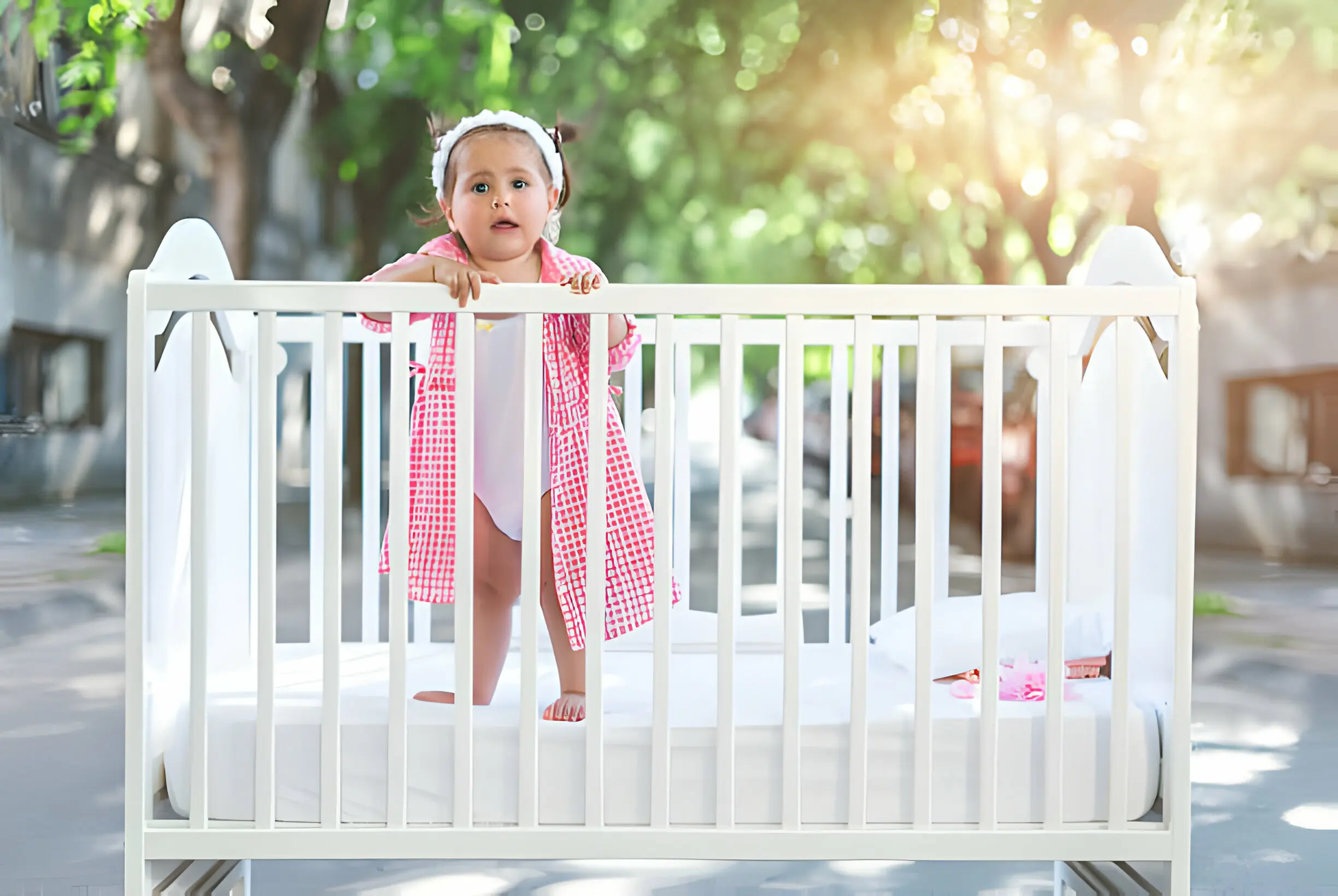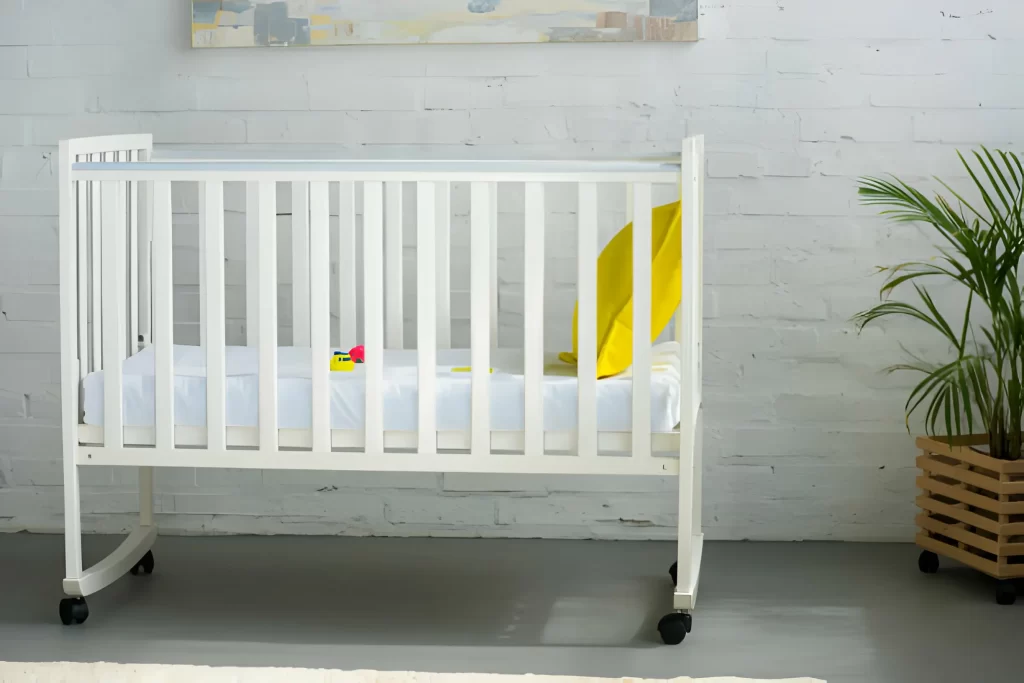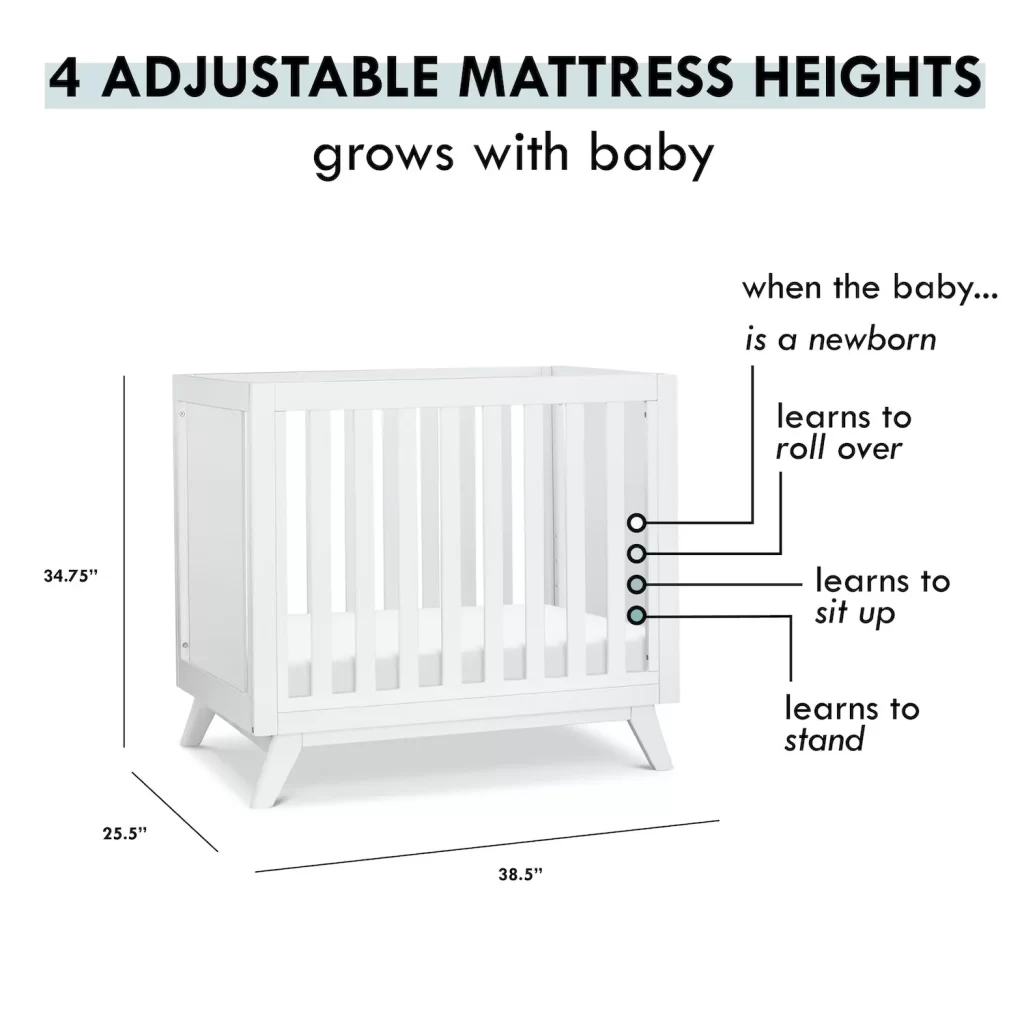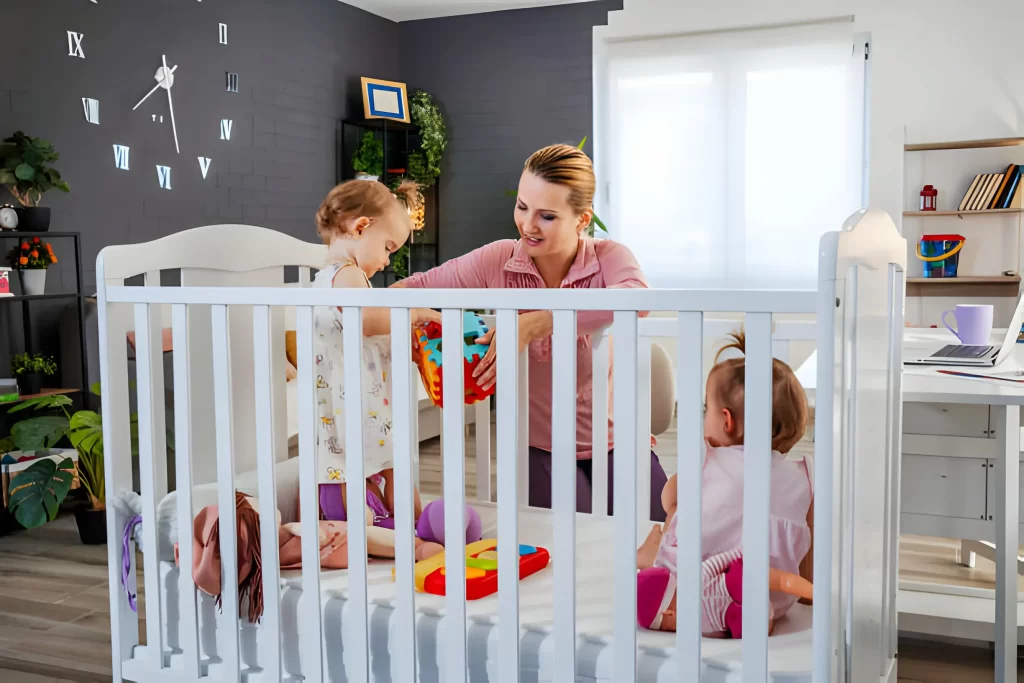Are Iron Cribs Safe for Babies?

One of the biggest purchases for expecting parents is selecting the right crib for their nursery. With so many options on the market, it can be an overwhelming decision. A major choice is whether to go with a metal or iron crib versus other materials like wood.
Iron cribs have several potential benefits like affordability, durability, and ease of maintenance that may appeal to parents. However, the safety of metal and iron cribs is also a top concern. By learning about the key factors to evaluate with iron cribs, you can determine if this classic crib material is the best choice for your baby.
What to Look for in an Iron Crib
Iron cribs have remained popular over decades, but the manufacturing process and safety standards have evolved. Here are the critical factors to research when shopping for an iron crib:
Quality Manufacturing

The quality and workmanship of the crib should be your top consideration, regardless of the material. Higher-end iron cribs are typically constructed from thicker, more durable steel. Examine the welding and joints to ensure there are no rough or sharp edges. Check consumer reviews and opt for established crib brands known for their quality.
Safety Certifications
Any crib sold in major retailers in the United States must meet safety requirements set by the Consumer Product Safety Commission (CPSC) and the Juvenile Products Manufacturers Association (JPMA). Look for an iron crib certified by both organizations, which means it has passed rigorous testing for slat strength, mattress fit, lead/toxicity levels, and injury risks.
Non-Toxic Paints and Finishes

For both decorating and preventing rust, iron cribs are coated in paint or finishes. Be sure to select a crib that uses non-toxic paints without lead, formaldehyde, or other hazardous chemicals. JPMA certification means the finishes meet safety standards. Also, inspect the paint for chips or peels which could expose the metal.
Adjustable Mattress Height

For convenience and safety, the mattress height in a crib should be adjustable. This allows you to lower it as your baby begins to stand and start climbing. Check that the iron crib has at least 2-3 adjustable mattress positions. The mattress should also fit snugly against the sides without large gaps.
Convertible Design
Many iron cribs today offer 3-in-1 or 4-in-1 convertible designs. This means the crib can transition from a standard crib to a toddler bed, daybed, or full-size bed as your child grows. This adaptability allows you to get years of use from your iron crib as opposed to replacing it.
Benefits of Choosing an Iron Crib

Assuming you select a high-quality iron crib with proper certifications, some of the advantages of metal cribs include:
Price and Value
One of the biggest appeals of iron cribs is that they are very budget-friendly, especially compared to wood alternatives. The steel construction keeps costs down. And if you choose a convertible model, you get longevity for your investment as it adapts to your child.
Durability and Longevity

Properly maintained, a quality steel crib can potentially last for many years and multiple children. The sturdy iron framework stands up well to regular use without significant wear and tear. Iron simply lasts longer than materials like plastic or cheaper wood.
Ease of Maintenance
Keeping an iron crib sanitary for a baby is very simple. Unlike wood, metal does not absorb liquids. You can quickly wipe down iron cribs to keep them clean and disinfected. Metal cribs do not require special cleaners or polishes either.
Design Flexibility
While wood cribs have a classic appeal, iron cribs offer more diversity of styles. You can find sleek modern designs, ornate vintage looks, cute pink or blue colors, and more. The powder coating process allows for lots of creativity.
Temperature Regulation
Unlike wood which can feel colder to the touch, iron absorbs and radiates heat fairly evenly. So metal cribs generally maintain a more consistent neutral temperature in any nursery environment. Just avoid placing them directly next to heating/cooling vents.
Potential Drawbacks of Iron Cribs
However, iron cribs also come with a few disadvantages to note:
Prone to Rusting
The main downside is that iron can start to rust if the paint coatings become chipped or scratched over time. This not only impacts aesthetics but could potentially expose babies to rust particles containing lead. Be vigilant about refinishing at any signs of wear.
Heat/Cold Conduction
While temperature regulation can be beneficial, it also means iron absorbs and conducts temperatures more rapidly. An iron crib may feel cold to the touch in a chilly room. Direct heating/cooling vents can make metal hot or cold.
Weight and Mobility
Iron cribs are typically bulkier and heavier than other materials like wood or plastic. While you likely won’t be moving a crib daily, iron cribs are harder to transport between rooms or homes. Pick a permanent nursery spot.
Noisy with Use
Compared to quiet wood, iron cribs can be a bit noisier with squeaks and sounds when mobile babies shake and rattle them. The noises likely won’t disturb the baby but could be annoying for some parents. Use padding to reduce sounds.
Key Iron Crib Safety FAQs
For parents still uncertain if iron meets safety needs, here are some common crib questions:
Are vintage iron cribs safe to use?
Older iron cribs likely do not meet current stringent safety standards unless properly retrofitted. Many vintage models have designs, slat spacing, and construction materials that would be deemed unsafe today. Opt for a new iron crib that adheres to the latest guidelines.
Is it safe for a baby to sleep in an iron crib?
Yes, iron is considered a safe crib material as long as quality manufacturing is used and all safety certifications are met. While any crib comes with some risk, certified iron cribs must pass rigorous testing to minimize hazards. Focus on quality and safety compliance.
What are the safest cribs on the market?
The safest cribs are those with JPMA and CSPC certifications, indicating they adhere to the latest safety standards. Materials like wood, iron, or plastic can all make safe cribs when proper construction methods and quality controls are used. Always opt for a certified crib.
How long can a baby use an iron crib?
Most iron cribs today have adjustable mattress positions, allowing them to be used from infancy into the toddler years until age 2-3 or whenever your child can climb out. Convertible iron cribs can even transition to a toddler bed for further longevity.
Also Read:
- How to Choose a Safe Crib for Your Baby
- Are Metal Cribs Safe for Babies
- How to Make an Old Crib Safe for Your Baby
- Why Should Crib Be Away From the Wall
- At What Age Are Crib Bumper Pads Safe
- 100 Baby Girl Names You Will Love
Final Thoughts
When searching for the right crib, there are lots of options to weigh. Iron cribs can offer advantages like affordability, durability, and ease of care. However, be sure to choose a quality iron crib from a reputable brand that has met all the latest safety certifications. Avoid cheaper brands that may cut corners.
With attention to quality and safety testing, iron can be a good crib material choice for many families. Do your research and factor in your priorities to decide if an iron crib is the right option for your new arrival.
